Siwayul. Two-Spirit. Non-Binary Trans Womxn. Panromantic. Polyamorous. Nawat. Salvadoran. Hearing. She/her/hers, please. Patreon: XemiDaTwoSpirit
Don't wanna be here? Send us removal request.
Photo

TRANS HET LOVE (sometimes) IS QUEER AS FUCK Become a Patron of mine: Patreon.com/XemiDaTwoSpirit
#t4t#trans4trans#transgender#transhet#heterosexual#transwoman#transman#nonbinary#twoc#tmoc#tpoc#enby
7 notes
·
View notes
Text
On Womxn of Color Directing DC Theatre
As an artist, a feminist, and a Non-Binary Trans Womxn of Color Director and theatre artist working in the DC Metropolitan theatre scene, my experience working with Womxn of Color Directors has been very limited. My curiosity about the inclusion of womxn of color directors has led me to a little bit of research on the topic.
How many womxn of color have been nominated for the Helen Hayes Award in Directing and Music Direction since it’s beginning? How many womxn of color have won the Helen Hayes Award for Directing or Music Directing? Is there a lack of female directors being nominated? Is there a lack of directors of color being nominated? Or is this simply another example of the double hurdle womxn of color must jump over very often in order to receive recognition? How many womxn of color were actually given the opportunity to direct for the 2016-2017 season? Using HHA Nominees & Recipients advanced search options on TheatreWashington’s website, DCTheatreScene’s season reveal, and other online resources, I found some answers to these questions.

Since 1985, only three womxn of color have been nominated for the award for “Outstanding Director”. There have been zero womxn of color nominated for “Outstanding Musical Director”. In 1997, Marsha A. Jackson-Randolph was nominated for “Outstanding Director, Resident Musical” for Studio Theatre’s HIP 2: BIRTH OF THE BOOM. In 1999, Seret Scott was nominated for “Outstanding Director, Resident Play” for Studio Theatre’s THE OLD SETTLER. In 2004, Regina Taylor was nominated for “Outstanding Director, Resident Musical” for Arena Stage’s CROWNS, becoming the first and only womxn of color recipient of the honor. There have been zero Womxn of color who have been nominated for the Helen Hayes in Direction or Music Direction since Taylor’s win, including the 2017 Helen Hayes Awards.

(Photo Credit: Regina Taylor)
Non-POC (white) womxn have actively, though sparingly at times, been competitors in the Director categories since the inception of the Helen Hayes Awards in 1985 when four of the six nominees for “Outstanding Director, Resident Production” were non-POC womxn. In 1988, Zelda Fichandler became the first womxn to win the award. Several womxn have won since then including: Allison Arkell Stockman, Kasi Campbell, Yaël Farber, Mary Hall Surface, Marcia Milgrom, Toby Orenstein, Regina Taylor, Jane Wagner, Mary Zimmerman, and Joy Zinoman. Mollly Smith and Joy Zinoman have both been nominated 10 times for the award. The most nominated non-POC womxn for Director is Toby Orenstein, who has been nominated 11 times for the award.
For the 2017 Helen Hayes Awards, five non-POC womxn have been nominated for Musical Direction or Director of a Play or Musical. In the “ Outstanding Musical Direction-HELEN” category, Karen Hansen earns her 2nd Helen Hayes Nomination for her work in MOXIE: A HAPPENSTANCE VAUDEVILLE at Happenstance Theater. In the “Outstanding Director of a Play-HELEN Production” category, Sabrina Mandell earns her 4th Helen Hayes Nomination, her first in Direction, for her work in MOXIE: A HAPPENSTANCE VAUDEVILLE at Happenstance Theater. In the “Outstanding Director of a Play-HAYES Production” category, Joanie Schultz earns her first Helen Hayes Nomination for her work on HAND TO GOD at Studio Theatre. In the “Outstanding Direction, Musical-HAYES”, Molly Smith earns her 10th Helen Hayes Nomination for her work in CAROUSEL at Arena Stage. In the “Outstanding Direction, Musical-HELEN” category, Allison Arkell Stockman earns her 2nd Helen Hayes Nomination for her work on URINETOWN at Constellation Theatre Company. Of the 30 nominees in the 6 directing categories, only 5 of those nominated were non-POC womxn: 16% non-POC womxn, 81% men, and 3% non-POC Non-Binary Trans-masculine.
Men of Color have long been competitors in the Direction categories as well. In 1988, the first man of color to be nominated (and win) the award was Lloyd Richards for his work on Arena Stage’s JOE TURNER’S COME AND GONE. Since then, Richards has been nominated 2 more times, and won once more. Several other men of color have been nominated and have won as well, such as: Thomas W. Jones II, who has harnessed a total of 8 Directing Nominations and 2 wins; William Knowles who has received 5 nominations and one win; and Anderson Edwards & William F. Hubbard who have both been nominated and won once.
For the 2017 Helen Hayes Awards, two men of color have been nominated for “Outstanding Musical Direction-HAYES”: Darius Smith for his work on JELLY’S LAST JAM at Signature Theatre, and Markus Williams for his work on THE CHRISTIANS at Theater J; and one man of color was nominated for “Outstanding Direction, Play-HELEN”: Psalmayene 24 for his work on WORD BECOMES FLESH at Theater Alliance.
Of the 30 nominees in the 6 directing categories, only 3 of those nominated were men of color: 10% MOC, 90% non-MOC (including white men, white womxn, and white Non-Binary folx). (Additional note: Non-womxn Non-POC directors, José Luis Arellano Garcia and Will Davis, both made history as the first Spanish-speaking director and Non-Binary Trans-Masculine director, respectively, to win the award at the 2016 Helen Hayes Awards. They both received a 2nd nomination for the 2017 Helen Hayes Awards.)
It’s clear that womxn of color have not fared as well as non-POC womxn nor men of color in Direction. But why? Why have womxn of color not been able to achieve the amount of recognition that their non-female, non-POC peers have? Perhaps opportunities aren’t as readily available for womxn of color, and therefore the chances of being nominated are much lower.
Looking at the 2016-2017 season, it’s clear opportunities are not given to womxn of color.
Only 1 in every 6 DC professional theatre company gave an opportunity to womxn of color to direct this season.
Of over 300 shows this season, 15 are directed by 13 womxn of color.
Less than 5% of the productions this season were directed by womxn of color.
Those productions are: ************************************************************************************* 1st Stage - Ma Rainey's Black Bottom Directed by Deidra LaWan Starnes

************************************************************************************* Ally Theatre Company - Think Before You Holla Directed by Taylor Reynolds

************************************************************************************* Arena Stage - Smart People Directed by Seema Sueko

************************************************************************************* Avant Bard - The Gospel at Colonus Directed by Jennifer L. Nelson

************************************************************************************* Center Stage - Les Liaisons Dangereuses Directed by Hana S. Sharif

************************************************************************************* Center Stage - The White Snake Directed by Natsu Onoda Power

************************************************************************************* GALA Hispanic Theatre - Seneca: Library Mouse Directed by Cecilia Cackley

************************************************************************************* Kennedy Center - Debbie Allen's Freeze Frame Directed by Debbie Allen

************************************************************************************* Live Garra Theatre - A Matter of Perspective Directed by Wanda Whiteside

************************************************************************************* Mosaic Theatre - Milk Like Sugar Directed by Jennifer L. Nelson

************************************************************************************* Mosaic Theatre - Charm Directed by Natsu Onoda Power

************************************************************************************* Mosaic Theatre - A Human Being Died that Night Directed by Logan Vaughn

************************************************************************************* Shakespeare Theatre Company - Macbeth Directed by Liesl Tommy

************************************************************************************* Theatre Alliance - brownsville song (b-side for tray) Directed by Paige Hernandez

************************************************************************************* Theatre Alliance - Black Nativity Directed by Princess Mhoon

************************************************************************************* These thirteen successful, phenomenal womxn deserve our applause. They are an inspiration to all the womxn of color in our area who wish they could direct a professional theatre production, but simply don’t think it possible. Even those that know it is possible for them, it is a very nice sight to see someone representing for the black and brown girls.
It’s important for the DC Professional Theatres to support the diversification of the community. Artistic Directors can help by picking plays by diverse playwrights and hiring diverse directors for those productions. Diverse directors will in turn hire diverse actors and designers.
Providing opportunities for womxn of color to direct will bring forth a stronger community, and a wave of artistic resurgence. This goes without mentioning, inclusion of Transgender Womxn of Color in these theatre companies is specifically important. While it is sad that only 15 WOC had the opportunity to direct this season, it is further unfortunate that all of those womxn are not out trans womxn.
To all the black and brown girls: keep doing and improving your art. You are the present of DC theatre and you deserve to be heard.
Hopefully one day, many brilliant womxn of color could follow in the footsteps of Regina Taylor, break that barrier that prevents WOC directors from recognition, and win the esteemed award for our community once more.
#dc theatre#women of color#directors of color#female directors#woman director#womxn#womyn#cwoc#twoc#regina taylor#washington dc#equality#inclusion#equity#actors#designers#performer#theatre artist#theater#theatre#maryland#virginia#black is beautiful#brown is beautiful#poc#black women#native women#asian women#latinx#diversity
3 notes
·
View notes
Text
All-Male Taming of the Shrew: or female erasure & transmisogyny in 2016 US Theatre
Open letter to Shakespeare Theatre Company Leadership, Yeyek tunal, nutukay Xemi. Good day to you all, my name is Xemi. May this message find you in a place of understanding and receptiveness. I am a mixed race Amerindian (Nawat) and Western Asian (Sephardic), bigender Two-Spirit theatre artist in the Washington DC area. I aim to foster safe spaces for Native American artists in DC Theatre, and work towards a decolonial future where all voices and bodies are welcomed.
I am writing you this open letter because I firmly believe that your company is an ally to DC’s LGBTQIA+ communities; I believe that any action your company has taken against DC’s LGBTQIA+ communities has been out of not knowing or being fully and accurately informed rather than out of malice; and I believe there is still time to repair any harm, erasure, or gendered and sexual marginalization committed against DC’s LGBTQIA+ community before it manifests on stage. I am writing this open letter to your company because the erasure of female and non-binary voices and bodies in your upcoming production of Taming of the Shrew is an act of transmisogyny, and needs to be addressed. A general note given on the Taming of the Shrew casting notice can be found on backstage.com .
“This will be an immersive, ALL MALE production of The Taming of the Shrew. The production will take advantage of the recent advances in legislation toward gay marriage, retaining the original genders of the characters (the women will be women) while simultaneously providing a world where the values of Love and Marriage are evaluated within a queered perspective.”
“This production will be tonally provocative in addressing issues of sexuality, violence and exploration of identity.” The casting notice for the show raises questions about STC’s understanding of gender, sexual orientation, representation, and holistic queer history:
1) How can this production “take advantage of the recent advances in legislation toward gay marriage” by “retaining the original genders of the characters”? By definition, the “original” or canonical relationship between Kate and Petruchio, as well the relationships between Bianca and her suitors, are heterosexual. If gay marriage was actually being celebrated, Petruchio and Kate would be the same gender, out of the innumerable genders that exist. Homosexuality, or same-sex attraction or same-gender love or gay-ness, requires that those involved in the relationship be of the same gender. A male Petruchio and a female Kate do not celebrate gay marriage as the characters are of different genders. That is to say, canonically, the relationship between Petruchio and Kate is a heterosexual one; where a canonical male role and a canonical female role are romantically intimate with one another. In sum, the fact that the gender of the actors playing the roles are the same does not change the canonical relationship. It is still read as a heterosexual one in the Universe of Taming of the Shrew. In contrast, casting a women in the role of Petruchio and having her play the role as a woman creates a story that celebrates gay marriage; however, maintaining the couples canonical hetero-relationship does not add the desired provocativity or nuance to the production.
2) Does casting cisgender men as women to celebrate same-gender marriage, homogenize LGBTQIA+ identities? A huge red flag for Trans issues and representation is risen when Producers inadvertently try and queer hetero-relationships in this way. Transgender women who date cisgender men are by definition heterosexual. Oftentimes cisgender heterosexuals, who don’t examine gender and sexual orientation as often as transgender folks and cisgender sexual orientation minorities do, don’t distinguish between gender identity and sexual orientation; defaulting to define all as “queer” by proxy of the LGBTQIA+ spectrum. This practice has been documented to erase cisgender lesbians and trans folks of all genders.
3) Why cast cisgender men as Transgender Women? “Exploration of identity” suggests exploration of gender since male actors are called upon to represent these female roles. Though the casting notice does not call Kate, Bianca, and the Widow, Transgender Women, given the framework laid out by STC, it is clear that these women in Taming of the Shrew are not cisgender. It is so unfortunate the tradition of casting cisgender men as Transgender Women continues considering DC is home to Casa Ruby- the only Bilingual Multicultural LGBT Organization providing life saving services and programs to the most vulnerable in the LGBT community; and that Trans & Queer specific talent agencies such as awqward talent exist. Finding queer and Trans talent is so easy in DC.
4) What are the repercussions of baring Non-Binary people and Women from these financial opportunities? Reserving those three female roles that could go to Transgender women, Non-Binary people, or cisgender women, for cisgender men instead, does not only erase women from Taming of the Shrew, but it also strips the financial opportunities for said women. Three Principal AEA Contracts at $909/week minimum for Kate, Bianca, and Widow means that in the 12-14 week contract period, three cisgender men will be receiving a combined total of over $32,700 that could have gone to women. These three opportunities could have gone to Transgender Women. According to the DC Trans Coalition Access Denied: Washington, DC Trans Needs Assessment Report,
“…over 46% of our respondents made below $10,000 (per year), compared to only 11% of Washington, DC residents. Trans persons of color, particularly trans women of color, face the greatest economic hardships of those we surveyed, with 57% making below $10,000”
and
“36% reporting unemployment compared to just 9% of Washington, DC residents, (with) Black trans persons (having) the highest rate of unemployment at 55%.”
It is unfortunate to see these roles be denied to LGBTQIA+ women; Black Transgender women of color in particular.
I am thrilled that the company has broken it’s 25 year old tradition of all-white directors for mainstage productions. Ed Sylvanus Iskandar’s perspective as an Indonesian director is one that would be very enriching to DC as other Asian directors’ influences have been to DC’s professional theatres, as well as considering the struggles of Asian-American Theatre Artists, but that does not change the transmisogynistic nature of this vision. I can only imagine what a Taming of the Shrew with DC’s LGBTQIA+ communities included in telling this story would be like.
Transgender actress and activist Laverne Cox says regarding the entertainment industry that “market forces can’t be dismissed when casting decisions are made.“ Distinguished Professor bell hooks calls those forces “Imperialist White Supremacist Capitalist Patriarchy”. Where systems “support, uphold, or perpetuate” a Patriarchy that is Imperialist, White Supremacist, and Capitalist. This is about systems. Not individual people or individual groups. Systemic oppression are those forces that must be combated.
This open letter is not meant to be an attack on Shakespeare Theatre Company, but rather a conversation starter about the Colonial nature of our theatre community. How can Shakespeare Theatre Company be a better ally to DC’s LGBTQIA+ Community’s decolonization processes from the Imperialist White Supremacist Capitalist Patriarchy?
I encourage Shakespeare Theatre Company and all allies of DC’s LGBTQIA+ communities, to evaluate on how to create, and do their part in creating a theatre community where all voices and bodies are invited to participate.
Sincerely,
Xemiyulu (a proud Transgender Two-Spirit of the Nawat-Maya-Lenca Nation known internationally as El Salvador)
#TWOC#transgender#TMOC#QPOC#queer#QWOC#QMOC#trans#dctheatre#theatre#pinkwashing#lgbtqia#transmisogyny#female erasure
1 note
·
View note
Text
DCTheatre & Latin American Heritage Month
In 1968, Felix Longoria, a Chicano, was killed in action in the Philippines during WWII. When his body was returned home to Three Rivers, TX, local racists insisted he be buried on the “Mexican side” of the cemetery. The disrespect of the National Hero’s body and ancestry, gained national attention, and Private Felix Z. Longoria was buried at the Arlington National Cemetery, making him the first fallen soldier of Mexican-descent to be interred there. President Lyndon Johnson observed Hispanic Heritage Week for the first time in 1968, and on August 17, 1988, President Ronald Reagan enacted Hispanic Heritage Month into law. Ethnic and racial tensions in Three Rivers continue to this day, and the confusion as to what a Hispanic or a Latino/a/x is continues as well.
youtube
(Video: Independent Lens, THE LONGORIA AFFAIR, Video Extra, PBS)
HispanicHertiageMonth.Org says on their website, “Many Hispanic Americans trace their roots to the cultures of the indigenous peoples of the Americas – including the Arawaks (Puerto Rico), the Aztecs [exonym] (Mexico), the Incas (South America), the Maya (Central America), and the Tainos (in Cuba, Puerto Rico and other places). Some trace their roots to the Spanish explorers – who in the 1400s set out to find an easier and less costly way to trade with the Indies. Other Latinos trace their roots to the Africans who were brought as slaves to the New World”. Though there is varying opinion on what the name of the celebration should be (Hispanic Heritage Month vs. Latin American Heritage Month), the celebration remains the same: every year on September 15 through October 15, the United States of America celebrates the histories of Latin America including independence from Spain, and the accomplishments of Latin Americans who helped shape the United States into the nation it is today. Some argue that “Hispanic Heritage Month” praises the Hispanic colonizers, and that “Latin American Heritage Month” would be a better name as it encompasses all Latin Americans (the Indigenous, the African, the Asian, and the European) regardless of their racial background. For the purposes of this blog post, the acronym LAHM (Latin American Heritage Month) will be used to honor the descendants of the Indigenous people of the American and African continents that have been affected by the colonization.
Collectively, in the DC Metropolitan Area, the Latina/o/x and Latin American population is between 9 and 14%, depending on the study. LAHM is a perfect time for DC Theatre to feature their Latinx (a gender-neutral term for Latino and Latina that embraces gender non-conforming people of Latin American background) playwrights, directors, designers, actors, and technicians. The Women’s Voices Theatre Festival is also running during LAHM; a perfect opportunity to feature Latina Playwrights- something Arena Stage and Pointless Theatre Company must have considered when planning their season. Between September 15 and October 15, theatreWashington has tracked 62 productionsthat will be playing. From these productions, 7 playwrights, 4 directors, 4 costume designers, 1 light designer, 2 composers, 2 sound designers, 3 music directors, 5 set designers, 2 puppet designers, 2 projections/media designer, 1 other designer, 1 panelist, and 27 actors of Latin American or Hispanic heritage will be featured.
I want to take the time to celebrate these artists. If I mention you in this post and you wish to not be named or if I misidentified your ancestral nation of origin, please let me know and I will kindly remove you from the list or edit your profile. I will say it took me a while to find out where all these artists are from, and some I couldn’t find, but all of this came from a place of love. For the most part, I did not mention any of these Latinx artists’ racial background, because I do not decide what race these folks are, only they and their family history can do that. Amo a todxs mis artistas Latinoamericanxs. ¡Que viva América!
There were three companies who deserve special commendation because of their commitment to the inclusion of Latinx and Hispanic Artists during LAHM: Arena Stage, GALA Hispanic Theatre, and Pointless Theatre Company. Though these three companies produced completely different shows in so many ways, they are providing US Theatre the diversity and inclusion it needs.
This first show, I have not seen, but they have given 17 jobs to Latinx and Hispanic artists. Arena Stage features playwright Karen Zacarias’ (Mexican-descent) telenovela-style comedy DESTINY OF DESIRES, running until October 18, directed by Jose Luis Valenzuela (Mexican-descent). There are 4 Latinx or Hispanic creative team members including: light design by Pablo Santiago (Mexican-descent), Composer Rosino Serrano (Spanish-descent), sound design by John Zalewski (Brazilian-descent), and set design by Francois-Pierre Couture (Quebecan-descent); and there are 11 Latinx or Spanish actors: Esperanza America (Mexican-descent), Oscar Ceville (Panamanian-descent), Gabriela Fernandez-Coffey (?-descent), Carlos Gomez (Cuban-descent), Fidel Gomez (Mexican-descent), Rayanne Gonzales (?-descent), Castulo Guerra (Argentine-descent), Marian Licha (Puerto Rican-descent), Nicholas Rodriguez (Mexican-descent), Elia Saldana (Mexican-descent), and Rosino Serrano (Spanish-descent). That’s a lot of Latinx and Hispanic Artists! It’s so amazing that this show is existing in my theatre community! My only concern is that it is not accessible to Latinx audiences. This is Arena Stage after all, and the ticket prices are higher. With $40 for a low priced seat, it may be too expensive for some Latinx families to make the trip to watch DESTINY OF DESIRES. I have seen some coupons going around, so maybe they found their way to some Latinx folks who needed them. My hope it to watch the show before it closes so I can experience the majesty that is DC Latinx Theatre!
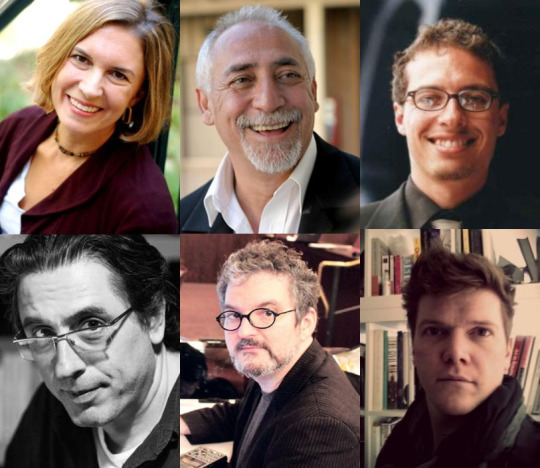
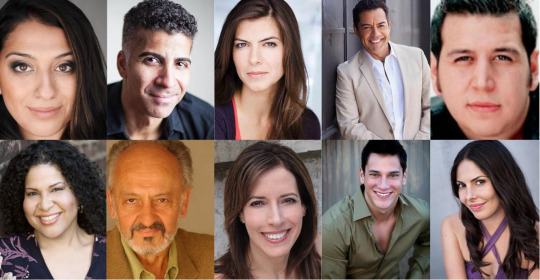
(Latinx Artists from Arena Stage’s DESTINY OF DESIRES: Karen Zacarias, Jose Luis Valenzuela, Pablo Santiago, Rosino Serrano, John Zalewski, Francois-Pierre Couture, Esperanza America, Oscar Ceville, Gabriela Fernandez-Coffey, Carlos Gomez, Fidel Gomez, Rayanne Gonzales, Castulo Guerra, Marian Licha, Nicholas Rodriguez, and Elia Saldana.)
[[I would like to extend a special thanks to a non-Latina, Molly Smith- Artistic Director of Arena Stage and one of the Founders of the Women’s Voice Theatre Festival- who took the time to celebrate the Latina playwright during Latin American Hertiage Month. She did not have to do that… most Artistic Directors didn’t. But she had faith in Karen Zacarias and in Latinx Theatre. And now this show is Helen Hayes Recommended, which will surely produce a lot of first time Latinx nominees and winners at the next Helen Hayes Awards. I can’t wait to see that!!!]]
The next show I did see. This show’s existence in DC theatre was so important, though it’s placement during LAHM was kind of off putting to many Latinx artists I’ve spoken to. GALA Hispanic Theatre featured an adaptation of Federico Garcia Lorca’s (Spanish-descent) YERMA, by playwright Fernando J. Lopez (Spanish-descent), directed by Jose Luis Arellano (Spanish-descent). There were 5 Spanish-descent Creative Team members including: costume design by Silvia de Marta, set design by Silvia de Marta, Composer Mariano Marin, sound design by Mariano Marin, and projections/media design by Alvaro Luna; and 5 Spanish or Latinx Actors: Mabel del Pozo (Spanish-descent), Iker Lastra (Spanish-descent), Eric Robledo (Mexican-descent), Luz Nicolas (Spanish-descent), and Natalia Miranda-Guzman (Chilean-descent). The off putting-ness comes in that GALA Hispanic Theatre is celebrating Spanish Heritage rather than Latin American heritage during LAHM by producing a play by a Spanish playwright rather than a Latin American playwright. However, when taken out of that context, it is so important that GALA is producing work by a non-Anglo playwright during LAHM. It’s so important that GALA is providing opportunities to migrant workers and local Latinx and Spanish artists. It’s so important that GALA is unapologetically doing a show in Spanish during LAHM. More companies should be doing shows in Spanish… especially during LAHM. Though GALA’s ticket prices aren’t as high as Arena Stage’s, they are still rather expensive for Latinx folks who may be struggling to pay the rent, but who would appreciate hearing a story in a language they can fully understand and appreciate. This show, another Helen Hayes Recommended production, was beautiful, creative, and really intense. Very much like everything else GALA Hispanic Theatre does. Though Lorca might not have been the best way to celebrate LAHM, his presence in DC Theatre was incredibly appreciated… This play has actually inspired me to look into the writing of another poet: Nezahualcoyotl, a Tezcoco leader who was known for his poetry. Lorca, though not a Latin American, has inspired a Latin American to further the Latin American Theatre…. which to me is such a beautiful and needed thing.
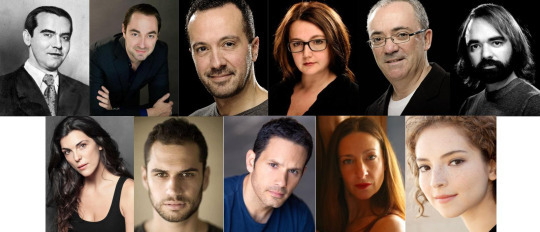
(Latinx/Hispanic Artists from YERMA: Federico Garcia Lorca, Fernando J. Lopez, Jose Luis Arellano, Silvia de Marta, Mariano Marin, Alvaro Luna, Mabel del Pozo, Iker Lastra, Eric Robledo, Luz Nicolas, and Natalia Miranda-Guzman)
The next show actually hasn’t opened yet, but I am so excited for it! Pointless Theatre features playwrights Mel Bieler (Brazilian-descent) and Patti Kalil (Brazilian-descent)’s GIMMIE A BAND, GIMMIE A BANANA: THE CARMEN MIRANDA STORY, directed by Roberta Alves (Brazilian-descent). There are 5 Brazilian-descent Creative Team members including: Music Direction by Patricia Vergara, set design by Mel Bieler and Patti Kalil, and puppet design by Mel Bieler and Patti Kalil; and 3 Latinx actors: Sharalys Silva (Puerto Rican-descent), Belen Oyola-Rebaza (Peruvian-descent), and Philip da Costa (Brazilian-descent). This story is about Carmen Miranda, a controversial Latin American icon who is quite possibly the mother of the Latina Bombshell stereotype in the US, but is known abroad as someone who appropriated Afro-Bahia women’s clothing and style of music (something that to white Brazilians was seen as distasteful to the white image Brazil intended to show abroad.). It’s fascinating to see that Afro-Latina actor Sharalys Silva will be playing Carmen Miranda, and that the play features other Latinx artists of color. To me, it is reminiscent to what is being done with Hamilton on Broadway, where artists of color are playing famous white folks; likewise Latinx artists of color are playing famous White Brazilians. Having a Black woman reclaim Miranda’s iconography for the community is a beautiful message I take from it. I’m very excited to see this show… plus puppets! So yeah, I’m definitely catching this show! And so should you! Tickets are only $20-$25 and I’m sure there are coupons rolling around!
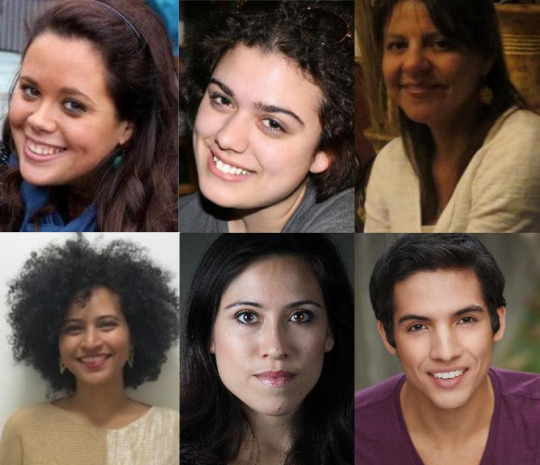
(Latinx Artists from GIMMIE A BAND, GIMMIE A BANANA: THE CARMEN MIRANDA STORY: Mel Bieler, Patti Kalil, Patricia Vergara,Sharalys Silva, Belen Oyola-Rebaza, and Philip da Costa. Picture Not Found: Roberta Alves.)
The In Series’ LATINA SUPREMES featured Music Directors Mari Paz (Cuban-descent) and Diana Saez (Puerto Rican-descent), as well as Actors Patricia Portillo (Mexican-descent), Mari Paz (Cuban-descent) and Diana Saez (Puerto Rican-descent). I was not able to watch this show sadly, but the cabaret-style aspect of the show intrigued me. I love diversity in theatre style. I was a bit confused by the “Supremes” part of the title of the show, considering there was a mix of Latina women songwriters that were slated to be featured. I imagined that, much like their namesake, the “Latina Supremes” would be Black women. I imagined La Lupe, Sheiela E., Celia Cruz, and Susan Baca. Mariah Carey, Kelis, Esperanza Spalding, and Sabi. AFRO-Latinas. But that’s just what I imagine when I hear the word Supremes. The result, I’m sure, was beautiful. I really wish I would have had the chance to see it. (Did anyone I know catch this show?)
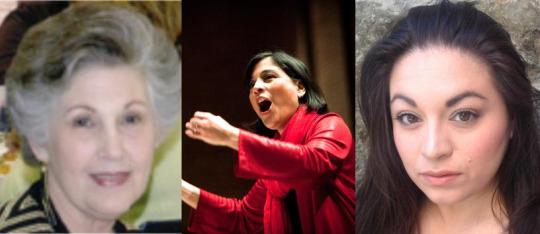
(Latinx Artists from LATINA SUPREMES: Mari Paz, Diana Saez, and Patricia Portillo.)
The next show, I sadly missed, is Theatre J’s QUEEN GIRL IN THE WORLD. This show featured 4 Latina Creative Team members including: costume design by Ivania Stack (Costa Rican-descent), projections/media design by Ruthmarie Tenorio (Mexican-descent), set design by Ruthmarie Tenorio (Mexican-descent), and other designs by Paige Hernandez (Cuban-descent). I think it is awesome that this non-Latinx play provided 3 Latinas work for LAHM and the Women’s Voices Theatre Festival. More companies should have done that! Even if you can’t produce a Latinx playwright, you should still hire Latinx artists… especially to feature during LAHM. It’s no surprise that it is Theatre J who provided these jobs. They do awesome show by diverse artists all time and have provided many opportunities to diverse artists.
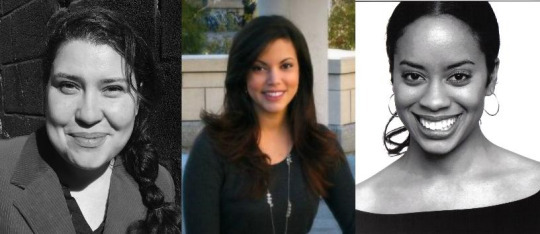
(Latinx Artists from QUEEN GIRL IN THE WORLD : Ivania Stack, Ruthmarie Tenorio, and Paige Hernandez)
I haven’t caught this next show, but I still have time- it runs until November 1st! Olney Theatre Center’s BAD DOG features 3 Latinx artists: costumes design by Ivania Stack (Costa Rican-descent); and two actors Gladys Rodriguez (Puerto Rican-descent), and Carlos Saldaña (?-descent). This show doesn’t have Latinx themes but it’s great that these Latinx artists were able to be featured this month.
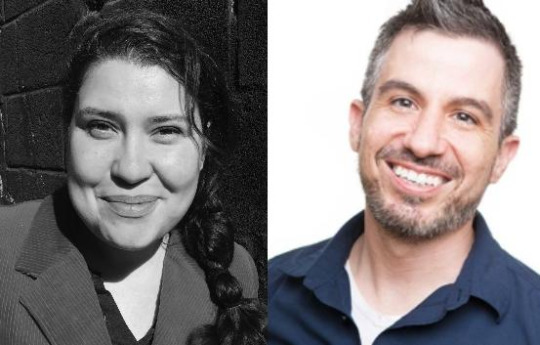
(Latinx Artists from BAD DOG: Ivania Stack, and Carlos Saldaña. Picture Not Found: Gladys Rodriguez)
Admittedly I haven’t caught most shows, but that’s just cuz theatre is expensive. I tend to just go to free or PWYC events, unless ticket prices are reasonable. This next play, I missed specifically because it is so far from where I live, however, these artists should still be recognized. Red Branch Theater Company’s DOGFIGHT featured 2 Latinx actors: Javier del Pilar (Puerto Rican-descent) and Daniel Rodriguez (Honduran-descent). I hope the show went great! I saw Javier del Pilar in Spring Awakening, and they were amazing! I hope to see more from both of these Latinx artists in the future!
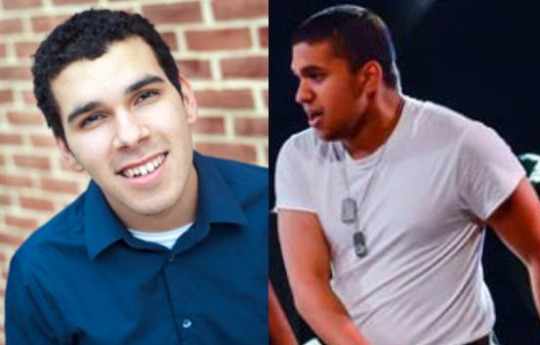
(Latinx Artists from DOGFIGHT: Javier del Pilar and Daniel Rodriguez.)
I missed this next free event at The Kennedy Center Theatre Lab for reasons I’m still beating myself up about. It was a reading of Lisa Loomer’s (Spanish-descent) ROE. I absolutely love Lisa Loomer and was so excited to see that The Kennedy Center Theatre Lab was doing a reading of one of her shows. From just reading a description of her play, I know it was probably an amazing evening. More companies should produce Lisa Loomer…
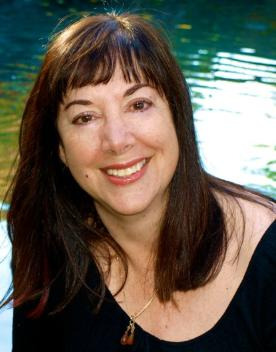
(Hispanic Artist from ROE: Lisa Loomer.)
The next show, I haven’t seen, but it runs until November 22 at Signature Theatre. CAKE OFF is directed by Joe Calarco (?-descent). I hope I’m able to get out to see this play that’s part of the Women’s Voices Theatre Festival. Joe Calarco is also Resident Director/Director of New Works at Signature Theatre- ie. one of the leaders helping make decisions at a huge company. That’s important.

(Latinx/Hispanic Artist from CAKE OFF: Joe Calarco.)
This next play also (along with QUEEN GIRL IN THE WORLD and BAD DOG) features costume design by Ivania Stack (Costa Rican-descent): Woolly Mammoth Theatre Company’s WOMEN LAUGHING ALONE WITH A SALAD. I’m so happy that Ivania is so popular. That’s so important! I want to also plug Ivania’s company dog & pony dc . Follow them on twitter, like them on facebook, go to their website. Ivania Stack is a Ring Leader at dog & pony, which I’m sure means she’s one of las mera meras (the main mains) of the company. Go to their shows! Support Latinx Leaders in DC Theatre!
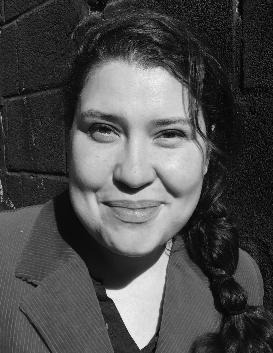
(Latinx Artist in WOMEN LAUGHING ALONE WITH A SALAD: Ivania Stack)
I was fortunate enough to catch Brittany Martz (Mexican-descent) in InterAct Story Theatre’s THE HERO OF EVERYTHING. This show was amazing- not just because of it’s artistic content but also because of it’s message. This show represented female empowerment and provided opportunities for diverse under-served youth to see themselves on stage.

(Latinx Artist in THE HERO OF EVERYTHING: Brittany Martz.)
Now, this next show, I’m a little on the fence talking about, simply because it has caused a lot of discomfort amongst some people I’ve spoken to about it. I’m talking about WSC Avant Bard’s FRIENDSHIP BETRAYED, an English translation of playwright María de Zayas y Sotomayor’s (Spanish-descent) LA TRAICIÓN EN LA AMISTAD. I was able to watch the show, and admired the language so much. I could hear de Zayas y Sotomayor’s words in my head in Spanish as the Avant Bard actors spoke in English. It was a fascinating experience. I will write more extensively about this show later and will provide a link here, so I won’t make too much of a statement on how I felt about this play. María de Zayas y Sotomayor is a fascinating playwright and because of this, I’m sure she’s been on GALA Hispanic Theatre and Teatro de la Luna’s radar for a long while. She’s been on my radar for years and I hope to one day have the space available to be able to study such an important literary figure in Hispanic Theatre History with my diverse communities.
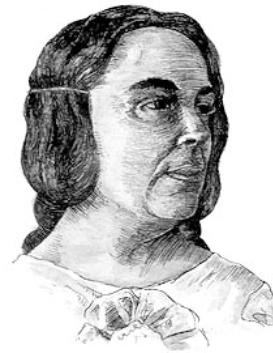
(Hispanic Artist in FRIENDSHIP BETRAYED: María de Zayas y Sotomayor)
Finally, there is one last Latina that must be recognized. The Kennedy Center Theatre Lab provided a discussion about intersectionality in the Women’s Voices Theatre Festival, called (ALL) WOMEN’S VOICES: A CONVERSATION ABOUT INTENTIONALITY AND INCLUSION. This conversation featured Paige Hernandez (Cuban-descent) as a performer and panelist. A friend of mine linked me to a video of this event after the fact, and I was so happy that it happened! Intersectionality is so important. I was so happy that Paige was able to represent for Latinas (and especially Afro-Latinas and Latinas of Color) in an Anglocentric theatre world for this conversation. Such a bummer she had to leave early, but she was working on Theatre J’s QUEEN GIRL IN THE WORLD, mentioned above. I’ve caught Paige in other works before and she was just amazing. ¡Adelante!
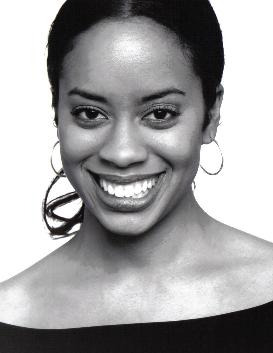
(Latinx Artist in (ALL) WOMEN’S VOICES: A CONVERSATION ABOUT INTENTIONALITY AND INCLUSION: Paige Hernandez)
These companies should be celebrated for their inclusion of Latinx artists into their productions and because they are taking motions to make our theatre community a better place. However, we should remember that it’s just 13 of 62 productions… which means 21% of shows performed during LAHM had at least 1 Latinx artists.Of those 62 only 3 of those shows had more than 5 Latinx artists in it: a teeny-weeny 5%. These numbers are important because they show that we have a long way to go.
It is also important to remember that racial inequality exists in Latin America and in the diaspora. It is evident by the Latinx artists featured in US media that White and Mestizx Latinx folks dominate the Latinx narrative, a privilege that can be very dangerous if gone unchecked. I don’t think it is 100% intentional, but at the same time, I think it should be addressed. There is diversity in DC Latinx artists and it’s obvious from the people featured in this article (look at those beautiful diverse Latinx faces!). We still need to do more to embrace Afro-Latinx and Indigenous-Latinx identities and cultures. Not to mention even discussing Asian-Latinx narratives. More diversity and inclusion can happen still.
I think something that needs to happen is that Latinx writers need to be cultivated. A local company should put out a program for local Latinx playwrights to develop their works to create a more inclusive community. I would love to be considered for a program like that. Somewhere I could work in community with other Latinx playwrights, to reshape the narratives of our diverse people. Only then can we really drive our community forward and truly become part of DC Theatre.
This season, there are 20 other shows that have been announced to be either written or directed by a Latinx or Hispanic artist, that I feel everyone should be aware of:
GALA Hispanic Theatre’s NUEVAS AVENTURAS DE DON QUIJOTE, based on the novel by Miguel de Cervantes Saavedra (Spanish-descent) Adaptation by Patricia Suárez (Argentine-descent) and directed by Cornelia Cody (?-descent) runs October 19 to 31
Constellation Theatre Company’s AVENUE Q with music and lyrics by Robert Lopez (Filipino-descent) [and Jeff Marx] runs October 22 to November 23.
Kennedy Center TYA’s ELEPHANT & PIGGIE’S WE ARE IN A PLAY! with music by Deborah Wicks La Puma (Mexican-descent) runs November 27 to January 3.
In Series’ BY GEORGE, BY IRA, BY GERSHWIN directed by Abel Lopez (?-descent) [and Reenie Codelka, Frank Conlon, and Angelisa Gillyard] runs November 29 to December 20.
GALA Hispanic Theatre’s EN LA USA ME QUEDE by Saulo García (Colombian-descent), directed by Valentin Alvarez-Campos (Cuban-descent) runs December 4 and 5.
Mosaic Theatre’s WRESTLING JERUSALEM directed by Michael John Garcés (Colombian-descent) runs January 6 to 24.
Kennedy Center TYA’s OLIVERio: A Brazilian Twist by Karen Zacarías (Mexican-descent) and music by Deborah Wicks La Puma (Mexican-descent) runs January 30 to February 21.
GALA Hispanic Theatre’s SEÑORITA Y MADAME: The Secret War of Elizabeth Arden and Helena Rubenstein By Gustavo Ott (Venezuelan-descent) directed by Conseulo Trum (Venezuelan-descent) runs February 4 to 28
In Series and The Washington Ballet’s Studio Company’s CARMEN IN HAVANA directed and choreographed by Septime Webre (Cuban-descent) and Carlos C. Rodríguez (Venezuelan-descent) [and David Palmer] runs February 5 to 7.
Olney Theatre Center’s CARMEN: AN AFRO-CUBAN JAZZ MUSICAL written and directed by Moisés Kaufman (Venezuelan-descent), and choreography by Sergio Trujillo (Colombian-descent), runs February 11 to March 6.
THE ANTIGONE PROJECT: A Play in 5 Parts by Caridad Svich (Cuban/Argentine/Spanish-descent) [and Tanya Barfield, Karen Hartman, Chioro Miyagawa, and Lynn Nottage] runs February 17 to March 6.
Signature Theatre’s THE FLICK directed by Joe Calarco (?-descent) runs March 1 to April 17
GALA Hispanic Theatre’s EL MUNDO ES UN PAÑUELO By Jorge Diaz (Chilean-descent) directed by Hugo Medrano (Argentine-descent) runs March 7 to 19
National Theatre’s JERSEY BOYS with choreography by Sergio Trujillo (Colombian-descent) runs April 6 to 24.
GALA Hispanic Theatre’s CRONICA DE UNA MUERTE ANUNCIADA/CHRONICLE OF A DEATH FORETOLD by Gabriel García Márquez (Colombian-descent), adapted by Jorge Ali Triana (Colombian-descent), and directed by José Zayas (Puerto Rican-descent) runs April 7 to May 8.
Imagination Stage’s LOOKING FOR ROBERTO CLEMENTE by Karen Zacarias (Mexican-descent), and music by Deborah Wicks La Puma (Mexican-descent) runs April 13 to May 22.
Theater J’s THE BODY OF AN AMERICAN directed by José Carrasquillo (Puerto Rican-descent) runs April 27 to May 29.
Folger Theatre’s DISTRICT MERCHANTS Directed by Michael John Garcés (Colombian-descent) runs May 31 to July 3.
GALA Hispanic Theatre’s EL PASO BLUE By Octavio Solis (Mexican-descent) directed by José Carrasquillo (Puerto Rican-descent) runs June 2 to 26.
Olney Theatre Company’s THE LITTLE MERMAID with choreography by Septime Webre (Cuban-descent) runs June 22 to August 14.
This may seem like a lot when written down, but it really isn’t when you begin comparing. I really don’t get why DC Theatre isn’t rushing to get Latinx playwrights and directors to do their thing…. I think it would be awesome if DC theatre companies could do at least 1 play per season by a Latinx playwright and with a Latinx director. Those Latinx artists can be of any race, but at least Latinx stories would be getting told. Latinx Audiences are part of the community too. DC theatre should be more inclusive of those audiences.
I will end this incredibly long blog post by saying that I’m so proud of all the people I listed in this post as well as all the other Latinx artists in DC Theatre I did not mention. Juntxs, nada nos puede vencer. Together, there’s nothing we can’t overcome.
¡Que vivan los Latinoamericanxs de Washington D.C.! ¡Que viva América!
1 note
·
View note
Text
Exploring Identity through theatre: Yek Tunal Kuskatan & the Salvadoran identity
I’ve been performing for a large part of my life, and have been working as a professional actor (for voice overs, film, and theatre) in Washington, D.C. for several years. I’ve played various roles, many of which were stereotypes of brown or LGBTQIA+ people, and have overall been dissatisfied with the work available to me and my communities.
Some of the most satisfying work I’ve done has been working with youth audiences with topics on identity. In Seasons of Light with Smithsonian’s Discovery Theatre, I was able to explore my diverse background and share my cultures with hundreds of young people. The play dealt with holidays around the world that deal with darkness and light. I was able to explore my Sefardi heritage through the study of Hanukkah, my Native American heritage through the study of the Winter Solstice, and my Latinx heritage through the study of Las Posadas. In GALita and Wit’s End Puppets co-production Fábula Mayas/Maya Fables, I was able to explore my Central American Indigenous heritage through bilingual storytelling. I met so many young people with both of those projects; all of which impacted my desire to do this type work.

(Image: Tetsina Wittiwa/Zuni Winter Solstice in Seasons of Light.)

(Image: Xmucane & Xpiyacoc in Fábula Mayas/Maya Fables.) However, the piece I’ve worked on that hits closest to home is a play I wrote about Native American pride, El Salvador history, and Indigenous language revitalization. They play was born out of an emergency and I continue to work on it out of necessity for this type of work. We need plays about identity. We need plays about Native American people. We need plays about language revitalization. We need diverse plays and stories. This play has morphed quite a bit since it’s original incarnation, and will continue to grow the more I explore it. In this blog post, I will talk about my journey with my tri-lingual play for young audiences and how it can shaped the Salvadoran identity of nationals and the diaspora. Background on Native American Identity and Nawat language In Washington, D.C. (and across the United States) there is a misguided idea on what it means to be Salvadoran and Latinx. These ideas have often been perpetuated by Anglx people through discrimination and Latinx people through assimilation. The “Latino race” myth is heavily accepted as fact in many spaces, including arts circles, and Latinx theatre is often discussed through a homogenized lense; often a Mexican, Spanish, or Argentine position, more specifically through white, white-passing, and light-skin narratives. On occasion, African and Indigenous American identities are explored, but these are not as commonplace. Salvadoran identity is represented through war, gang violence, and undocumented migration. Though these aspects of Salvadoran history are legitimate and influence the Salvadoran identity, there is also so much more than that oversimplification. For accurate and positive representation, diverse community collaboration is required. It’s necessary for diverse artists to reclaim our identities from the mainstream art world.
I was born in a town called Mejicanos in the department of San Salvador in El Salvador, Central America. I migrated to the United States with my family when I was a young child. I’ve lived in the Northern Virginia area ever since. I enjoy languages. I studied American Sign Language in community college, and Nawat through Alan R. King’s independent study course. I am in no way tri-lingual, but I do have a life goal to be a polyglot and to aid in the revitalization of Native American languages.
When I began studying Nawat, I was both scared and excited. I was excited because I believe that heritage is so important, and language was part of that. I was also scared because I knew that if I got involved with Nawat revitalization circles, I would need to do my part as well. The responsibility scared me. It still does.
King’s Nawat course, and subsequently the “Salvaemos el idioma Nahuat” Facebook group, is available to everyone and anyone interested in helping revitalize this endangered language. The group strives to make visible the Elders who speak Nawat fluently and to inspire Salvadoran nationals and diaspora to remember our Native American heritage through language. There is also research on El Salvador history available online, particularly on Tim Lohrentz’s typepad.com page “The Indigenous History of El Salvador”.
Of course it is always best to get Indigenous history from Indigenous Elders and Leaders. I have been fortunate enough to develop relationships with some International Indigenous Salvadoran leaders, particularly Chief Leonel Chevez of the Maya-Lenca Nation, and Chief Margarito Esquino of ANIS (Asociación Nacional Indígena Salvadoreña), and have been able to learn more about my history through their teachings.
Phase 1: Timumachtikan Nawat In 2014, a friend of mine informed me of an arts opportunity available at the child care center he worked at. I contacted the center and was able schedule performances of a new work for youth audiences sometime in the summer. I wrote a play called The Cosmic Twins, based off of a story from the Popol Vuh, for six actors. Unfortunately, I wasn’t able to keep all six of my actors for rehearsals so I had to come up with an alternative.
I was already studying Nawat at the time and decided that I wanted to do something about El Salvador and about Native American heritage. I decided that my play would be a one-persyn show featuring seven different characters, including historical figures from El Salvador. I named the show Timumachtikan Nawat! which means let’s learn Nawat. The story taught El Salvador history and Nawat vocabulary with song. I rehearsed it, reviewed my taped rehearsals in order to direct myself better, constructed simple puppets and props, and finally performed it at my friend’s child care center and at other locations in Northern Virginia. I was happy with the work I had done but my aspirations extend much higher. I lacked the two things that I needed to ensure my play’s success: community and funding. Still, I knew that with time, my little one-persxn play could become a young audience success story.



(Images: Atakat, Jose Feliciano Ama, and President Salvador Sanchez Ceren in Timumachtikan Nawat!)
Building a Native American Theatre Community in Washington, D.C. After my second production of Maya Fables with GALita and Wit’s End Puppets,we received much expected backlash from some artists of color. The production was called out for the use of red-face and for discriminating against Native American womyn and youth.
As a response, Miguel Amaguaña (mopino432), myself and the rest of the ensemble organized an open community forum entitled “In the beginning the Earth was empty…” A dialogue on Maya Fables and Imagining a Decolonial TYA Community. Our hope with the forum was to show accountability for the violence we perpetuated with Maya Fables and to initiate conversation about proper representation of Native American people in DC theatre.

(Image: Instagram advertisement for the open community forum)
From this forum, the group DC Native American Theatre Artists/Artistas Indígena de Teatro de DC was formed. The group is “comprised of Native American Artists from ethnic groups across the American continent, who work in the Washington, D.C. Metropolitan Area” and the group “serves as a resource for Non-Native American Artists interested in collaborating with Native American Artists in the DC Metro Area”.
Phase 2: Yek Tunal Kuskatan With a new community behind me, I decided to begin working on my trilingual play again. I did two main rewrites: a 2-persyn show and then a 4-persyn show. I renamed the play Yek Tunal Kuskatan, which means ‘good day, El Salvador,” and I reached out to members of DC Native American Theatre Artists/Artistas Indígena de Teatro de DC to collaborate.
I remembered that a local company called Openstage features a monthly open mic for theatre new works, and decided to contact them to workshop Yek Tunal Kuskatan. We were able to book a workshop performance of a scene from the play.
With puppets borrowed from GALA Hispanic theatre and made by Wit’s End Puppets, we were able to bring two of Yek Tunal Kuskatan’s characters to life. We took ¡TUM TICA!: Una Historia de Musica y Familia’s Tito Puente and made Yek Tunal Kuskatan’s Abuela, and we took Fábula Mayas‘ Disobedient Child and made Yek Tunal Kuskatan’s Chepe. Simple costume changes created brand new identities for the gorgeous puppets.

(Images: puppets in their original costumes)
With dates set and puppets secured, Miguel Amaguaña, Tsaitami Duchicela (prettyherricane), and I began rehearsing the scene from Yek Tunal Kuskatan. The scene was originally for 4 actors, but since I was not able to secure a third puppet, I simply combined two roles into one.
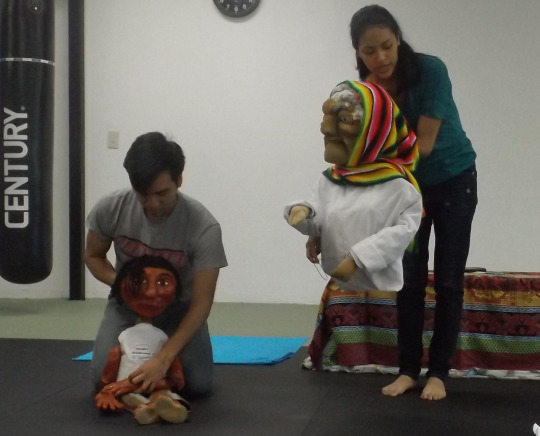



(Images: Yek Tunal Kuskatan rehearsals)
We used rehearsals to study El Salvador history, puppetry, and self-production for theatre. We took promotional shots for the workshop and began advertising on social media. Through this collaboration, we developed a preview I am very proud of.

(Image: Promotional material for Yek Tunal Kuskatan)
When the performance day finally arrived, we performed the workshop to a full house of an adult audience. I also shared the video of the performance with subtitles in Spanish with the “Salvemos el idioma Nahuat” group. Both audiences gave the performance excellent feedback. I was very satisfied with the progress the play had made since its’ first incarnation.
Phase 3: The Future I don’t want things to end there! I’ve been applying for grants so that I can get funding for a full stage production in Washington, D.C. I also, along with Alberto Cruz, a member of Colectivo Tzuntecun Ejecat, a group that works with Nahuat-speaking Elders from Santo Domingo de Guzman, applied for a transnational grant that would allow us to collaborate and take the story to El Salvador. Hopefully, with the help of arts organizations, my dream of providing opportunities for Native American artists and audiences in El Salvador and the diaspora can come true.
Because of my film background, another interest of mine would be to find funding for a film production of Yek Tunal Kuskatan. A film version would allow the story to reach a much larger audience, especially considering the people who need this story the most are not located in Washington, D.C. Puppetry for film is not only beautiful, but is increasing in popularity, now more than ever! Combining both mediums of entertainment could result in some really gorgeous and educational work. A DC theatre company that centers Native American Queer and Trans folx, Teatro de la Septima Generacion/Seventh Generation Theatre is growing; slowly but surely.
No matter what funding I do or do not get, I will continue to work on Yek Tunal Kuskatan because this work is much too important for me and my community. I really hope that theatre and the Diaspora could really benefit from this story. I know that it has really helped me be proud of my heritage and to inspire others to do the same.

#thisisnotlatinx#native american#native actors#native actress#indigenous languages#language revitalization#indigena#el salvador#nahuat#nawat#latinx#puppets#puppetry#TYA#theatre#DCTheatre#theatre for young audiences#young audiences#newplay#new works#guanacx#guanaca#guanaco#salvadoreña#salvadoreñx#raices#roots#heritage#culture#central america
1 note
·
View note
Text
Fuck Ableism (in DC Theatre & Beyond)
Ableism is never cool. No exceptions.
Last year, a local theatre company produced a show that featured a Deaf History storyline. The show featured Deaf characters and Deaf artists.
So I’m in rehearsal/performance (can’t recall which) for another show one day, and a hearing cast member from that show shows up at our rehearsal. During the break, we all get to chatting and that persyn begins talking about working on the show with Deaf Artists… and then proceeds to name the production. Not only could they not say anything positive about the experience, but they go on to talk about the headache/exhaustion they got from doing the show.
Basically- hearing tears.
They said that it was incredibly annoying that nothing was able to get done because of communication issues between Deaf and hearing Artists. That they felt it was unfair to hearing artists that they were forced to have a “less productive rehearsal”, and that the production team should have thought it through before mixing Deaf people into the ensemble.
Though their frustration is valid, (I know that when I have a task and I can’t get it done I too can get bugged) their ableism absolutely is not. Being frustrated for not getting things done- okay. Getting annoyed cause hearing artists aren’t the priority- not okay.
This is something Allies need to comprehend: if you are working on a piece that is outside of your culture, IT IS A PRIVILEGE for you to be there. You are not entitled to being in that space: IT IS NOT YOUR SPACE. It is no ones responsibility- especially not the community you are suppose to be Allied to- to accommodate to your privileged needs. YOU must accommodate to that community’s needs.
Working on a Deaf History project and you’re Hearing? You are PRIVILEGED to be working with Deaf Artists. YOU should be THANKING those Deaf Artists EVERY DAY for allowing you the space to tell a story THAT DOES NOT BELONG TO YOU. Your voice (figuratively and literally) should not be the loudest in the room. This is your opportunity to understand what it’s like to not be the center of attention. An opportunity to learn from marginalized communities about what marginalization is all about. It makes you uncomfortable to not have marginalized people cater to your every need? DON’T AUDITION FOR OR ACCEPT ROLES IN SHOWS ABOUT MARGINALIZED COMMUNITIES.
There are plenty of opportunities for Hearing and other non-marginalized communities. Go do THOSE projects. Fuck ableism.
On a more systemic level, when Deaf actor Miranda Medugno won her Helen Hayes award this past April- NONE of the local theatre journalists mentioned the HISTORIC NATURE of the win. THAT IS ABLEISM. The DC Theatre Community is so Hearing-centric because that is what it is used to. DC Theatre is used to not thinking about Deaf artists and Deaf audiences. I can count on one hand how many shows I’ve been in that have been accessible to Deaf audiences…. and that’s not cool. If DC Theatre really is a community, we have to learn to be more inclusive. Because right now, DC Theatre is for white able bodies cis men and cis women… The occasional Black able bodied cis man and the Black able bodied cis woman to play his love interest…. and that’s it. Yes, we have some theater companies producing non- “white able bodied cis” stories…. but it’s not enough. It’s not enough to be a token. Tokenism is another form of discrimination… As though Deaf artists can only play Deaf characters. South Asian artists can only play South Asian characters. Transgender artists can only play transgender characters. Instead of seeing marginalized communities for simply their differences, the DC community should learn that NOT ALL CHARACTERS ARE WHITE ABLE BODIED CIS MEN AND WOMEN. It’s okay to have a Deaf Ophelia. It’s okay to have a South Asian Cinderella. It’s okay to have a transgender Danny Zuko. It’s okay to hire non-white able bodies cis men and cis women. And it’s okay to celebrate these marginalized artists when they succeed.
Once again: CONGRATULATIONS MIRANDA MEDUGNO FOR YOUR HISTORIC WIN. You are doing amazing things not just for Deaf artists everywhere, but also changing the landscape of what US theatre is.
#ableism#deaf#hearing#marginalization#dctheatre#theatre#artists#dc#md#va#fuck ableism#helen keller#helen hayes#helenhayesawards#deaf history#herstory#HoH#inclusion#diversity
0 notes
Text
MIRANDA MEDUGNO. Know her name! #DeafTalent
Monday night at the Helen Hayes Awards, Miranda Medugno made history by winning the Helen Hayes Award for Outstanding Supporting Actress in a Musical, Helen category! She and Joe Caverly (Studio Theatre’s Tribes) had already made history when they were nominated in late January (the first Deaf Actors to be nominated for a Helen Hayes Award in TWENTY ONE YEARS)… so her win is an even bigger feat!
WHY IS NO ONE COVERING THIS?
Hearing Writers/Critics need to realize that Randi is proof that #DeafTalent is out there! They must respect her art. They must give her the recognition she deserves. The way these news articles are ignoring her HISTORIC WIN is abelism and #DeafErasure. Don’t #HearingWash DC Theatre History! Recognize that this #DeafActor just won a great honor.
Not only that, but she won the award for playing a DEAF CHARACTER.
My mind is BLOWN right now. Randi should be getting so much more coverage. Not only is she an amazing actor, but she just won an award for being an amazing actor. I feel blessed to even have acted with her! Congratulations on your historic win Randi!!!

(Miranda Medugno and Sarah Anne Sillers in Visible Language with WSC Avant Bard in 2014)
#dctheatre#deaftalent#deafactor#hha2015#2015hha#deaferasure#mirandamedugno#helenhayesawards#helen hayes#helen keller#deafcharacter
0 notes
Text
Reflection on GALita’s Fábulas Mayas
My experience with Fábulas Mayas began in 2013 when I responded to a casting notice from GALA Hispanic Theatre looking for Bilingual (Spanish/English) Actors for a kids play with puppets. I had recently graduated from The National Conservatory of Dramatic Arts and was auditioning for anything I possibly could. Many people in the industry told me to audition for GALA because of their status as an “of color” theatre and my multilingualism, but when I auditioned for Fábulas Mayas, I wasn’t actively looking for a Native American story to tell. In fact, it was not until after being cast that I discovered that Mayas in Fábulas Mayas was referring to the diverse Native American group the Mayas; I simply assumed it was a show about a girl named Maya telling her fables.

(Ad by GALA Hispanic Theatre)
From the day of the first read-through, I figured out that most of the artists involved in the production were non-Indigenous, as with any other show. Still, as I had never been involved with a production that featured a Native American story-line, I was excited to be part of something where I could openly explore my history and my identity. As an actor, I was so happy to play many different kinds of characters and to learn puppetry in this show, and as a person who only speaks Spanish with my Parents, I was excited to speak Spanish at work. Still, the lack of Indigenous Voices was alarming to me. I shared with the ensemble my feelings regarding the production; namely, how intensely satisfying it was to perform Brown stories for Brown children. Once closing at the Tivoli stage, we took the show on tour in South East DC, and once the tour ended, I said goodbye to Mayas until the following year.
Once 2014 came around, it was time to pick Fábulas Mayas up once again; this time for the INTERSECTIONS FESTIVAL at the Atlas Performing Arts Center. I was curious to see what more the ensemble could bring to the show. The show stayed virtually the same though, except a few blocking differences to accommodate to the smaller stage, and a couple of scenes were removed. Performing for these new audiences brought some new excitement to the show, but also brought up old demons I had already put to rest with the first run. I struggled with keeping myself professional and speaking up against the exclusion of Native Artists in a show about Native people. When @dcactorsofcolor released their first comment on Fábulas Mayas, I wasn’t entirely surprised by the content. They said that “though the production did not feature many Native American/Mestizo artists, the story and the use of playwright Cackley as a performer in the show, provided a smidgen of authenticity and somewhat excused the use of ‘redface’. One minimal move GALA/GALita could have made to further elevate the authenticity of this production would have been to hire a Native American director and a majority Native American ensemble, especially considering they were performing for Native American children.” I find that this assessment of the production was very fair. I agree that the show was a positive representation of Classical Maya stories that was done respectfully, but that still, more could have been done to make the show authentic.

(Puppet Design by Wit’s End Puppets)
In late June that year, GALA announced that another new children’s puppet show by Cecilia Cackley would premiere in the fall, and that the spring 2015 GALita show would be a remounting of Fábulas Mayas. I was beyond excited for Cecilia and the youth of DC for this news. When the Interim Production Manager contacted me mid-January regarding the remount of Fábulas Mayas, I was very happy to accept the role and to do the show again. I so badly desired to work with more Native American artists. In fact, when Miguel Amaguaña contacted me via Facebook before rehearsals even started to let me know that they would be part of the Cast, I was overjoyed with emotion! I knew this mounting of Fábulas Mayas was gonna change my life. It was so refreshing to know that I would be working with Miguel soon, and I could not wait to work with the other Native American artists that I would meeting during the remount. I was feeling empowered!
When the first rehearsal finally arrived, I realized that the only active change made was adding Miguel to the ensemble. Quickly my empowerment vanished. However, Miguel’s strength and courage to speak up about discomfort they felt seeing a brown child with two white parents, gave me the conviction to speak up about my discomfort as well. I mention that we need to needed to change the beatboxing Jaguars. That same day we reblocked the Jaguar’s first entrance, adding little stage combat and making the characters more cat-like. After rehearsal, I made a group page on Facebook called “Fábulas Mayas Cast Research Group” where the Company was free to post anything that they felt others could benefit from. We posted things such as Maya history, Maya music, Maya organizations, as well as articles about diversity in the arts, talking about race with kids, who should tell what stories, and much more.
As the days went on, we made more changes to the show and discussed ways to better represent Classical and Contemporary Maya cultures. Since music is a huge part of Native American performance art, we felt it was important to focus on the authenticity of the music. We rearranged our opening scene to start with the Classical Yucatán song “Konex, Konex,” followed by a Blessing to the Four Directions and a brief description of the show’s purpose. We also discussed searching for a Maya language song for the closing to replace our “Arullo” song. I found “Tu Wenel K'iin” by Composer Víctor Manuel Aarón Sánchez (Yucatán) on youtube, and I connected with José Felipe García Vargas (Yucatán), the musician who posted the video of the song, on Google Plus. I let them know about Fábulas Mayas and about how we wanted to use a verse from the song for the production. I shared the song with the Company, and we decided to only use the first verse for our show. In a word document, I wrote down the Yucatán and Spanish lyrics to the verse and translated it to English, so that the team could practice. Another Maya musician, Alberto Ramirez (Ixil), was asked to come into a rehearsal by Carol Spring. He taught us a drum rhythm, a flute melody, and a dance that we later used for the Uncle Coyote Dancing scene.
We made some more changes, such as cutting the character of Mother and giving those lines to the Father, and refashioned the essence of the Creator and Shaper. We began using the Classical Maya names Xpiyacoc and Xmucane for Creator and Shaper respectively, and worked the relationship between the two, reverting back to the original characteristics of the Classical characters: the Grandfather and Grandmother of all Maya people. We also discussed the idea of the flute melody Alberto taught us being played by a non-Indigenous musician. We were going to ask Alberto for more help pre-recording the song for use, but since the five of us did not have the money to pay Alberto for any of the work he did for Fábulas Mayas, we decided to deal with the situation ourselves. We opted to have Miguel whistle the melody instead of having Carol play the flute. Though Carol’s role in the production was being minimized, there wasn’t much more progress we could have made with the circumstances the Company was dealt.
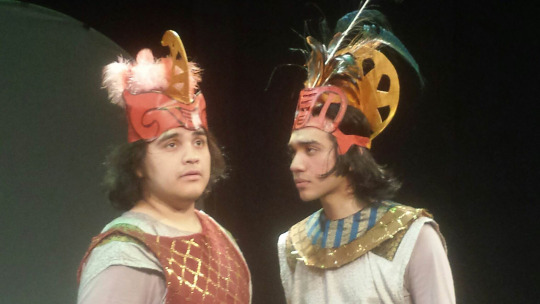
(Miguel & I as Xpiyacoc and Xmucane. Picture Credit goes to Renee Browne.)
Eleven days before opening, @dcactorsofcolor began posting on twitter and tumblr about this mounting of Fábulas Mayas. They urged GALA Hispanic Theatre that “#RedfaceIsDisgrace and to #DecolonizeMayanFables.” They also said that “casting European actors in Native American roles for Theatre for Young Audiences is discrimination against Native Artists and violence against Native American children.” I was not at all surprised by this feedback. @dcactorsofcolor had already suggested to GALA in 2014 that changes for better representation of Native American people were needed, and since Carol was still part of the production, it was only fair that a campaign began against Maya Fables and that the production was listed as perpetuating racism toward Native American women and children.

(@DCActorsOfColor advertisement)
The Company then had a more in depth conversation about what we were doing with the show and what ideas we were perpetuating. We stayed after rehearsal to discuss actions we could take. Miguel and I suggested an open community forum to discuss what happened with Fábulas Mayas and what we wish for the future of Native American theatre in D.C. Fábulas Mayas opened on March 9 to a great crowd of children, which inspired us to work harder to make the forum the best it could. Before and after each performance, the Company would plan the forum, and soon Cecilia began dialogue with GALA Management. Miguel and I actively searched for panelists for the talk. We met with some people we knew that were involved with the DC Activist and Artists communities, to hopefully get some leads on who we could bring on board the forum. Two particular names were given to us that we really wanted to meet: Gabby Tayac (Piscataway) and Chief Margarito Esquino (Nawat-Maya-Lenca). We began to try get into contact with these two Native American leaders. Miguel and I also agreed that we needed to contact the Piscataway Indian Nation to let them know about our forum and to see if we could collaborate with them to raise awareness of DC’s Indigenous communities; we took a visit to the National Museum of the American Indian (NMAI) and met with an employee there, Nancy, who offered to share the news of the forum with her colleagues (specifically with Gabby Tayac); and we met with Chief Esquino to discuss having him speak at the forum. Miguel and I were very hopeful with the new contacts we made, that we would be able to have a great conversation with the forum.
@dcactorsofcolor attended one of the performances the first week and wrote a detailed review of the show. They commended the Indigenous Artists who worked on the production, but still had much to say about representation and authenticity. @dcactorsofcolor posed questions such as “was [Xemi] paid for their non-acting based work on Mayan Fables?”, “why put the whole responsibility on Cackley’s shoulders?”, and “why could GALita not hire more Indigenous artists?”. They discussed the huge redface problem (“Over 65% of the credited artists are European-descendants”) and suggested that GALA is “at an ideal place to serve severely underserved communities: the intersection between Latinx and Indigenx cultures and identities”. @DCActorsOfColor discussed the importance of crediting (Native American) Artists for their work, since both Ramirez and Sánchez were not credited in the program, and pressed the need to discontinue the narrative that the Maya people are extinct, by adding information about Contemporary Maya history in the program. They questioned why GALA was not offering Fábulas Mayas as a show to be adjudicated by theatreWashington, and celebrated the successes of the new staging. @DCActorsOfColor said that “the concept of Indigenx performance being about more than music, dance, and theatre, was very strong in this production” and that “ritual and tradition played a large role in bringing authenticity into the production, and helping to #DecolonizeMayanFables.” They also praised the restaging of the Jaguars, adding that the former staging came “off as erroneous and somewhat offensive- bordering on Blackface” and that the new direction “was seamless and children’s laughter and cooperation in the play continued without the awkward hitch from before.” @DCActorsOfColor was very glad we took Xpiyacoc and Xmucane the way we did, commenting that the show “presented an example of queer love without being gaudy, but in a guiltless and endearing way.” They said that for the next remount, that there should be an “adherence to diverse, bilingual actors of color that have Native American roots.” because “representation is really important. #RepresentationMatters”. They also added that it is greatly important for GALita’s Artistic Director Laura Quiroga to respond to these comments, and that “ Cackley can definitely call this show a hit”. They “hope to see more from her (Cecilia Cackley) and Wit’s End in the future!” Overall, the review was constructive and encouraging, as well as provided a easy to follow description of the show’s public history.
With the review in mind, Miguel and I shared what we had planned with the Company for the forum. We set a date for the forum and made deadlines for ourselves to release a flyer and an invitation letter. At the closing performance of the show, we invited the Audience to the forum. It was there that Miguel and I met two Maya Graphic Artists, Frida Larios (Chorti) and Che León (Kiche), and we collected their business cards for future collaboration. After the show, Miguel and I met up with Chief Esquino. The Chief introduced us to Sebi Medina-Tayac, Gabby Tayac’s son, and took us to a ceremony in Native Maryland. Soon after, Miguel received an email from Nancy at NMAI with contact information for Tara Houska (Couchiching First Nation), a Tribal Rights Attorney in DC and one of the founders of the #NotYourMascotcampaign against the Washington Football Team, and we began reaching out to Tara on Twitter and via email about the forum. After a few back and forths, Tara also agrees to be part of the upcoming conversation. We continued trying to get into contact with Gabby Tayac (using a direct line her son had offered us) to no avail. I created a facebook event page and we all begin mentioning the forum on social media (twitter, facebook, tumblr). On the event page, I thanked and credited Victor Manuel Aarón Sánchez & Alberto Ramirez for their huge help on the production. I also met with the Chief to discuss the specific role he would play at the forum. As a Spiritual Leader, the Chief was to perform a blessing ceremony to ensure the forum was a success for Native American Artists. On March 26, the Company met with GALA leadership to discuss the specifics of the forum and we were able to release an advertisement the following day.

(Ad for the Open Community Forum. Credit goes to me)
On the day of the forum, March 30, Miguel meets up with Tara in person to discuss that night’s event. I meet up with Chief Esquino that afternoon as well, but unfortunately, due to an emergency, the Chief was not able to attend the open forum. The forum was held at GALA Hispanic Theatre with 20 individuals involved in the conversation. Though there were many small problems, I felt the forum allowed a space for community members to voice concerns about Native American representation in DC theatre, about Theatre for Young Audiences, and discuss ways to achieve a decolonial theatre community. As the forum was bilingual, we did have some issues with translation. Since we weren’t able to pay a translator, we had a volunteer who was not experience with translating this type of conversation, help us out. This was not ideal, and did ostracize some forum attendees at times, something for which I am sorry about and hope to find solutions for in the future. Still, some great ideas were formulated and we helped made a space to continue the conversation in the future by creating a facebook group that anyone interested in the future of DC’s Native American Theatre Community can be a part of. We hope that with this group, the Native American Theatre Artists communities of DC can be more unified to make collaboration easier.

(Artemis [Interpreter], Miguel [Moderator], Tara, Myself, Carol, and Ceci at the Forum. Photo credit goes to Sylvana Christopher.) Fábulas Mayas has been a long walk on a road to recognition. It really has been life-changing. Though all of this issue could have been avoided by collaborating with Maya (and other Native American) Artists early on in the process (as early as the writing stage!), it has allowed the Native American community to demand visibility and respect. I’m thankful that @dcactorsofcolor spoke up when no one else did. Of one thing I am positive: from this point forward, DC Theatre has no excuse for redface anymore. And for that I am forever grateful. Xemiyulu (a proud descendant of the Nawat-Maya-Lenca Nation known internationally as El Salvador)
#two spirit#twoc#dc theatre#theatre#nawat#indigena#maya#lenca#el salvador#guatemala#tara houska#margarito esquino#gabby tayac#piscataway#piscataway indian nation#couchiching first nation#instead of redface#reflection#decolonize#kuskatan#GALA Hispanic Theatre#Grupo De Artistas Latinoamericanos#actors of color#native actors#native artists#native theatre
0 notes